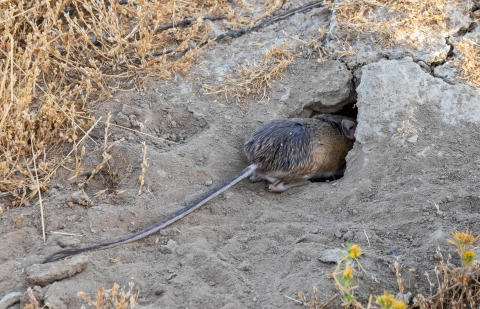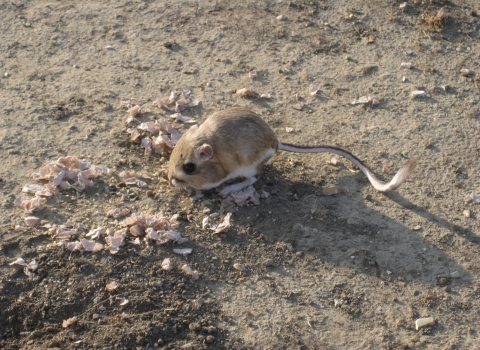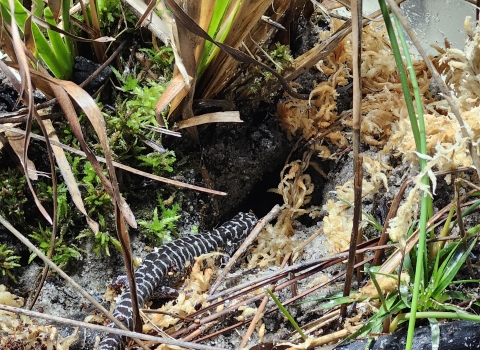In the arid landscape of Kern National Wildlife Refuge, our boots crunched prints two inches deep into the dry lattice of mud. It was like walking across chocolate meringue. I was traveling with Katie Jimenez, biologist at Kern National Wildlife Refuge, and members of CSU Stanislaus’ Endangered Species Recovery Program on a routine survey of the Refuge’s endangered Tipton kangaroo rat population. The flat landscape was dry and sparse, a smattering of short iodine bushes and shorter seepweed growing from cracked, salty earth. In mid-October, the daytime temperatures were still in the 90s, and I could feel my lips chapping while we set the traps for the rodents before sunset.
“It’s amazing that anything can live here,” I remarked. But I knew from experience that if there’s one thing nature had taught me, it’s that no matter how inhospitable a place may first appear, to something, it’s a perfect oasis.
Kangaroo rats are built for this.
“They’re perfectly adapted to the San Joaquin Valley,” said Jimenez, who has been surveying the Refuge’s wildlife for years. “They get all of the water they need from seeds, and they lose very little in their urine. They can go their whole lives without drinking water.”
Sure enough, our survey turned up plenty of Tipton kangaroo rats and the related but much more common Heermann’s kangaroo rats when we checked the traps in the morning, drawn in by a sprinkle of fresh birdseed. They may be small, but their importance in the dry uplands is huge. Like other burrowing—or fossorial—animals, kangaroo rats are vital to the livelihoods of other animals in their range.
“They’re ecosystem engineers,” Jimenez explained as we traveled down the survey line in the warming morning. Every few feet, burrows led into the relief of the cold dark beneath the baked surface. “Many animals out here can’t dig their own burrows, but everything uses them.” An array of snakes, lizards, amphibians, insects, even burrowing owls—they all depend on fossorial animals like kangaroo rats, badgers, and San Joaquin kit foxes to create their dens and refuges.
While rodents are often viewed primarily as prey species that fuel the food web, Tipton kangaroo rats show how rodents can have unique, vital roles that support the health of the whole ecosystem. Though Tipton kangaroo rats have lost much of their former habitat to agricultural development, the Service is working toward their recovery both on the Refuge and in partnership with land management agencies and private landowners in the San Joaquin Valley.








